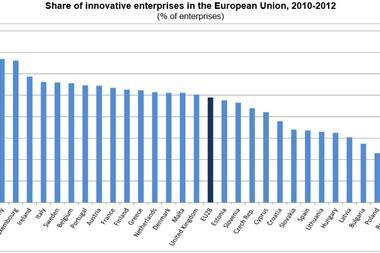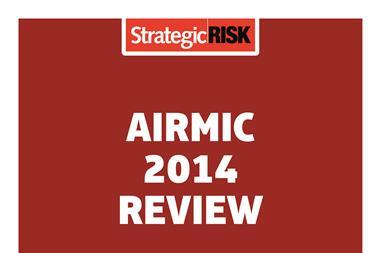When innovation is central to success, risk managers must find a balance between the risk of failure and failure to prevent risk

The past 20 years have seen a boom in technological progress that is arguably unmatched in human history. This period of rapid and profound changes has punished firms that failed to adapt and survive in the new world.
At the forefront of this high-tech evolution are risk managers and, understanding this, Airmic has invited consultant to the UK government and managing director at research firm Zentelligence, Simon Moores, to speak to delegates at this year’s conference.
Moores, who has worked at the European and UK Parliaments, focused on the importance of applying a fundamental and business-based risk management approach to IT risks in his speech on Monday and shared his thoughts on managing IT, cyber and digital risks.
Although managing the risks associated with cutting-edge technology can be complex and difficult to quantify, businesses are left with no option but to take them on or risk falling behind. As a result, firms are becoming heavily reliant on risky innovations that can keep them ahead of competitors.
When innovation is crucial to the success of an organisation, the risk manager must be able to assert the right balance between the risk of failure and failure to risk.
“The life cycle of products is sharpening in all sectors, not just in manufacturing; services are also affected., “says Dr Marie Gemma Dequae, scientific advisor to FERMA.
“The motor to these changes is linked to the digital world, the internet. This is changing the way companies work and the products they offer.
“Look at automobile manufacturers and compare a car today with one from 15 years ago; firms have had to innovate dramatically to include ICT in vehicles”.
At the forefront of changes
At the forefront of changes in technology is agri-business Syngenta, which describes itself as an agri-business “committed to sustainable agriculture through innovative research and technology”.
“For us, innovation has two aspects to it,” says Olivier Balmat, the firm’s head of group risk management and enterprise risk management.
Balmat says failure to innovate can affect a company’s sustainability and ability to survive. However, failure to innovate is not necessarily negative as it is often important to fail to learn how to succeed.
“Innovation should be seen from both perspectives.”
A challenge for risk managers working at the cutting edge of high tech is communicating effectively with technically specialised departments operating precise and complex projects.
“How a risk manager helps their company innovate depends on their role within the company and how narrow or broad their remits,” says Balmat.
“My job is not to decide how to manage a risk, that is the job of the line managers. My job is to help them explicitly address risks. Everyone does this implicitly, but the risk manager can help do this better by creating a common risk language.
“Specifically, when it comes to innovation, the risk manager can help people understand risk in its wider sense where failure can be good – as long as we draw the right conclusions and implement them in future projects.”
Balmat believes a key skill for risk managers working at technology firms is adapting their approach for different facets of the company.
“You will have to approach different people in different ways,” he says. “For example, scientists are logical, methodical people and you need to show them proof and let them explore your approach for themselves.
‘How a risk manager
“Other areas of the business will react differently and you need to be able to make switches in your approach. This is especially true when you are taking an enterprise-wide, holistic approach”.
Deciding together
At Syngenta, there are three sides to the business: the chemical side, the crop protection side and the seed side. “We are integrating these together and have overarching governance that follows each project from inception through to sales and the market and this process requires a full risk assessment.
“There are two dimensions to this: the risks associated with project management; but also the risks inherent in the content. Is it safe? Could it react to allergies? We need to know how the product will perform in the market: will people buy it; is the regulator likely to come to a decision against the product at a late stage?
“As risk managers, we help our colleagues see things end-to-end; help them see more broadly beyond their specialist area. Risk management allows everyone to bring their risks up and come to a decision together.
“Innovation is essential, but it becomes harder.”




















No comments yet